Progressing further into an interesting era for manga, full of pioneering work, we’ve reached the 1970’s. 1970 brings us an Osamu Tezuka who comes into his own as a seinen writer. We’ll also spend some time on one of the most influential manga of all time on graphic novels and cinema around the world. As far as my humble opinion and terrible excuse for research goes: here’s the best manga of 1970.
The best manga of 1970
Abandon the old in Tokyo – Yoshihiro Tatsumi, 1970
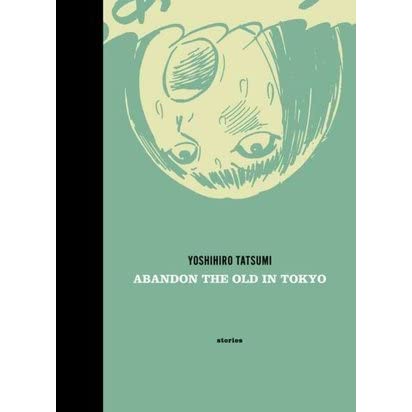
Abandon the Old in Tokyo, or Tokyo Ubasuteyama, (counted on MAL under Daihakken ) collects eight stories by gekiga pioneer Yoshihiro Tatsumi from 1970. These ground-breaking manga were featured in several magazines including Garo. The colletion won a Harvey Award and got nominated for an Eisner Award in 1970.
According to Tatsumi, the stories rekindled his passion in gekiga and depicted the focus on economic growth over the lifestyles of the people in postwar Japan. It’s full of anger about the discrimination and inequality in society. Parallels are drawn between the folk tale about the elderly being left to die on a mountain and the modern problem of caring for aged parents. The stories in Abandon the Old in Tokyo are deeper than in The Push Man and Other Stories and will stick with you for a long time as class inequality and the dehumanization and throwaway mentality of society are still very relevant issues.
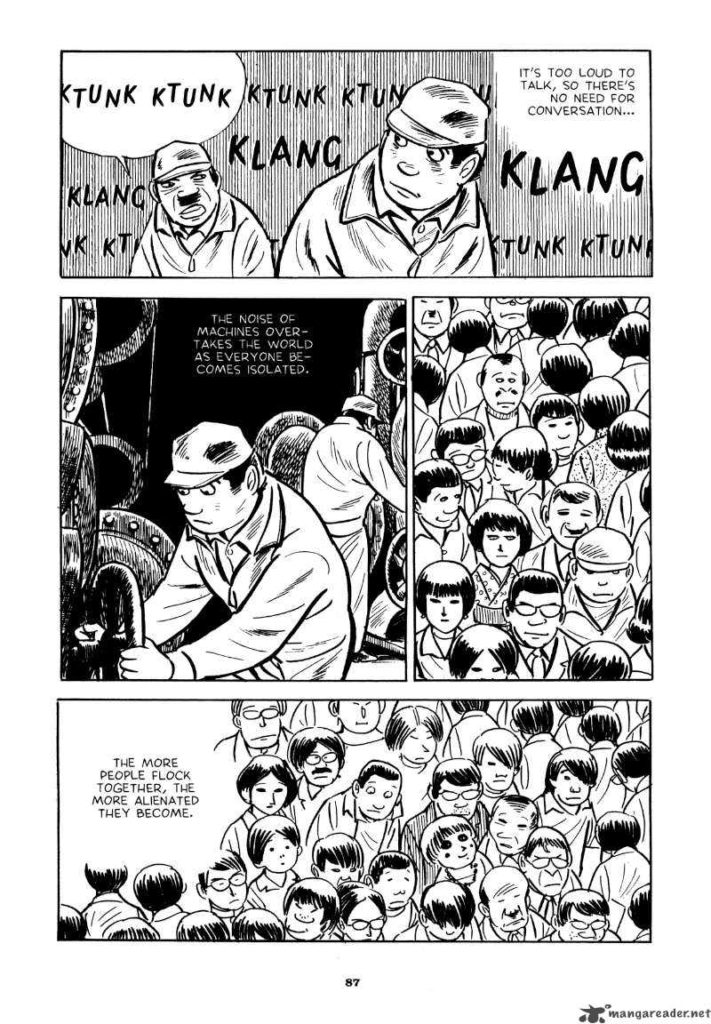
Hi no Tori: Resurrection – Osamu Tezuka, 1970-1971
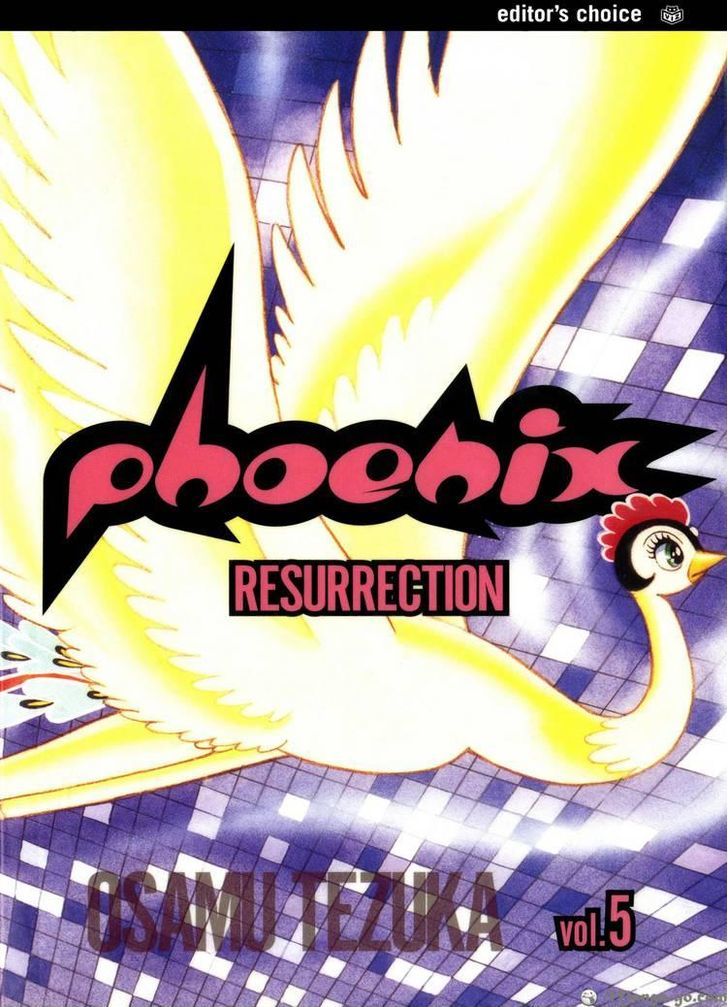
A young man dies and is returned to life with an artificial brain, which makes him see living things as distorted clay figured and machines and robots as beauties. I’m gonna keep this short, I already regret doing every single chapter of Hi no Tori separately, but anyway here is the fifth volume, and it’s an emotion-heavy epic.
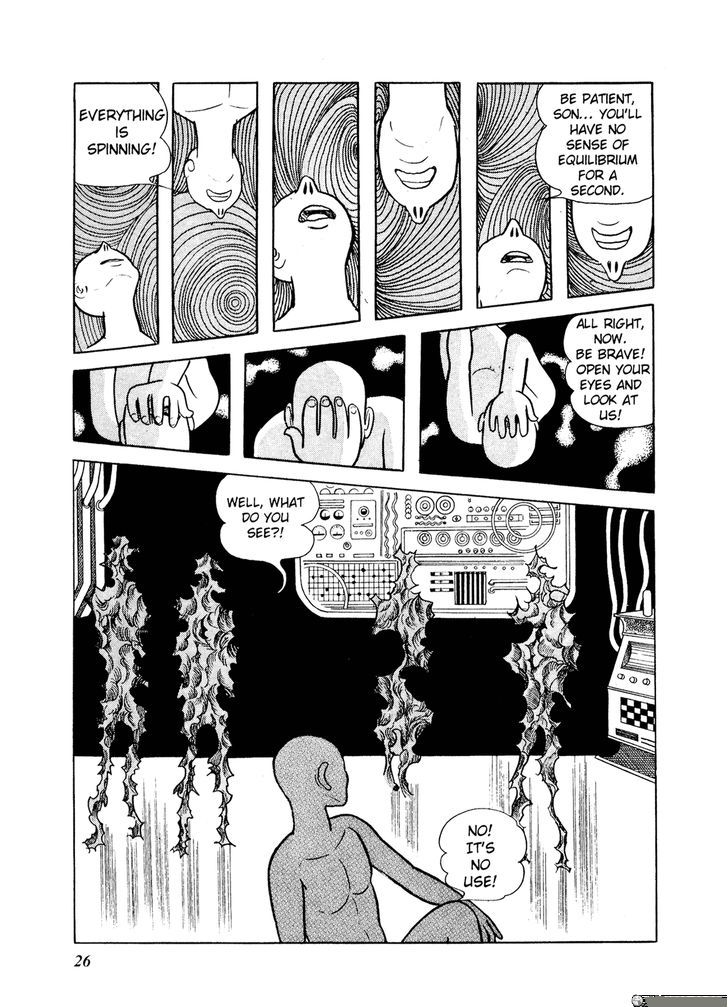
Ode to Kirihito – Osamu Tezuka, 1970-1971
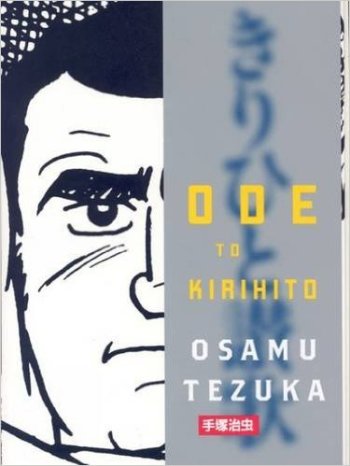
It’s been years since I’ve read Ode to Kirihito (Kirihito Sanka), I’d love to start over for you guys, but I’m currently busy working my way through 50+ manga being published in the year 2002. So my recollections will have to do. After the darker Dororo, Tezuka made Swallowing the Earth, a reaction to the gekiga manga of the experimental Garo magazine. He wasn’t quite happy with the result. But with Ode To Kirihito, Tezuka’s metamorphosis towards a seinen author seems to be almost complete. Not the highest rated manga by Tezuka, but one I look back to with respect.
In the first chapter, you can see him dwindling back and forth between his old comedic style and his new mature style. The main characters’ faces are especially atypical for Tezuka. But he doesn’t seem used to drawing this way yet. The tone of the manga becomes darker as it progresses. It also sets a trend for angry, amoral male lead characters in Tezuka manga.
Ode to Kirihito is highly dramatic for Tezuka as this point in time. I found it to be an enthralling manga of the highest quality. If you’re looking to delve into Tezuka’s serious works, but don’t want an overly long read. With 20 chapters and less than 900 pages, this is doable. I would also note that, according to my perspective, this era of Tezuka thrillers might have been a big influence on big “newer” works like Naoki Urasawa’s Monster and 20th Century Boys.
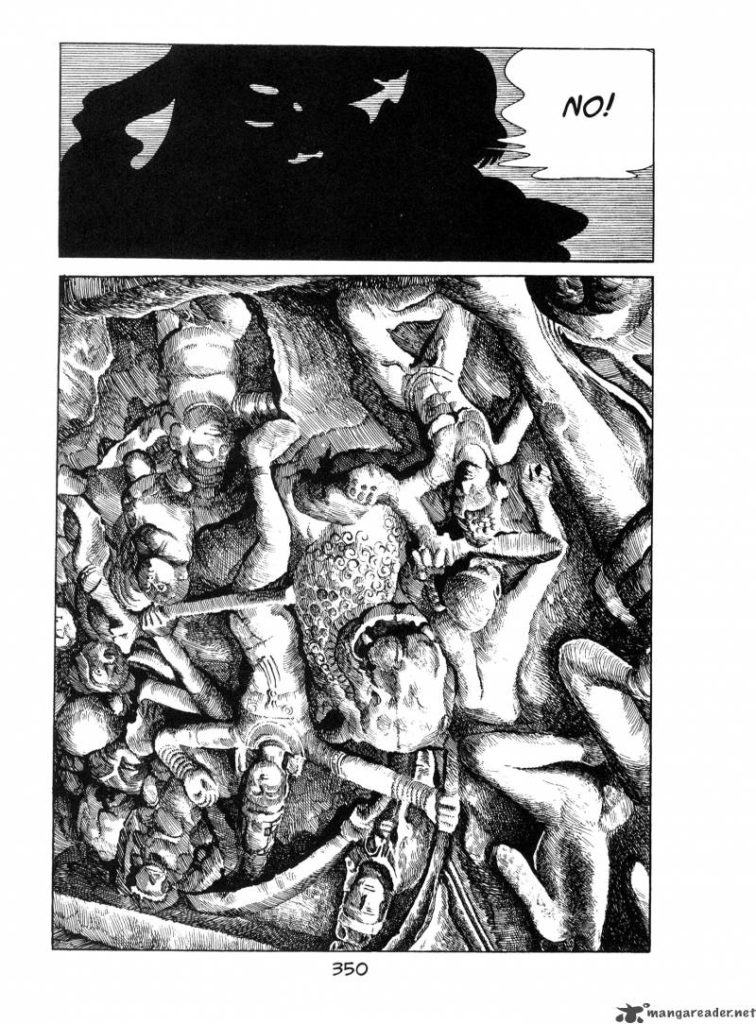
Apollo no Uta – Osamu Tezuka, 1970
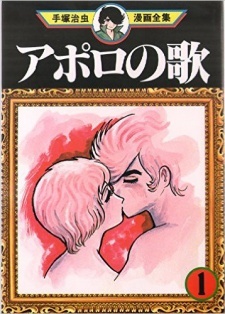
Written alongside Ode to Kirihito, Apollo no Uta or Apollo’s Song explores different themes and moods. It’s a melancholic tragedy, so if you’re a bleeding heart like me, this will probably hit you harder than the former. Shougo is a traumatized young man who kills animals who show each other affection. Karma’s a bitch so Shougo ends up in a mental institution, where he has vision of a goddess who dooms him to fall in love with the same girl over and over again, only one of them will always die before they can be together. Owch.
Don’t expect any subtlety here, Tezuka’s great but he can be an emotional bulldozer at times. While his characters are rarely black and white stereotypes and quite often unlikable anti-heroes, they also feel like characters from ancient epics, rather than real contemporary human beings. Nevertheless, if you can forgive the lack of emotional nuance of this era of manga, feel free to check out one of my favorite Tezuka’s, Apollo no Uta.
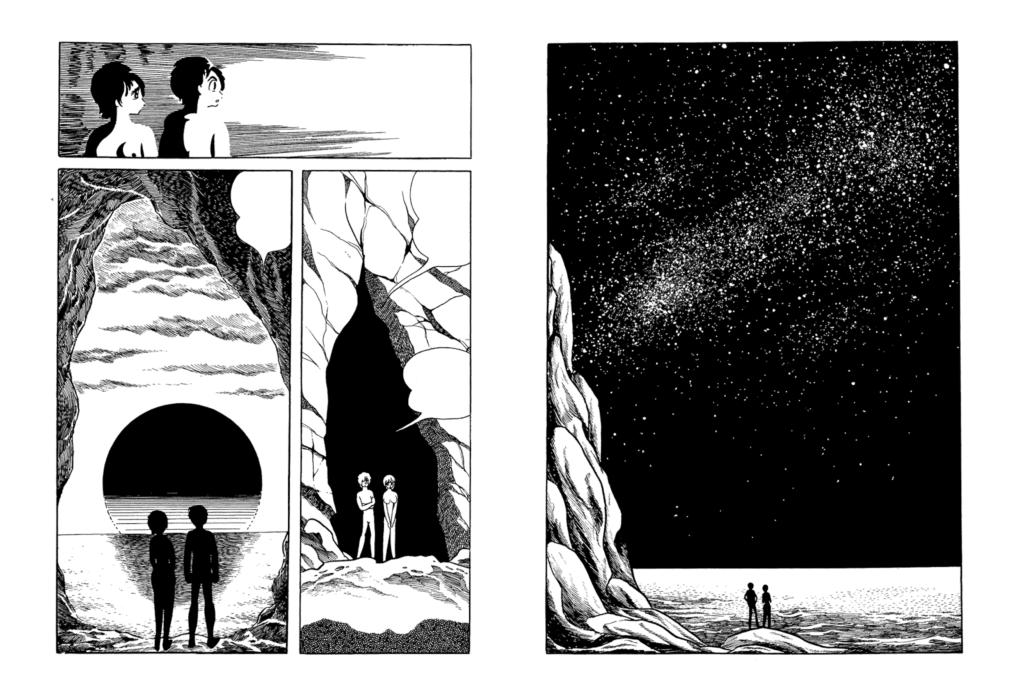
The Book of Human Insects – Osamu Tezuka, 1970-1971
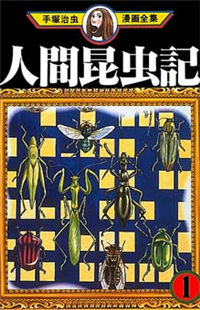
Osamu Tezuka was a busy bee in 1970, evolving in his new style. Ningen Konchuuki or The Book of Human Insects is a satirical manga comparing human society to the insect world. The main character Toshiko Tomura interistingly breaks societal norms for women in Japan while not exactly being a feminist role model either. The manga seems to reflect a lot of the changes in the country at the time and could be worthwhile just for that, it’s also just a good read.
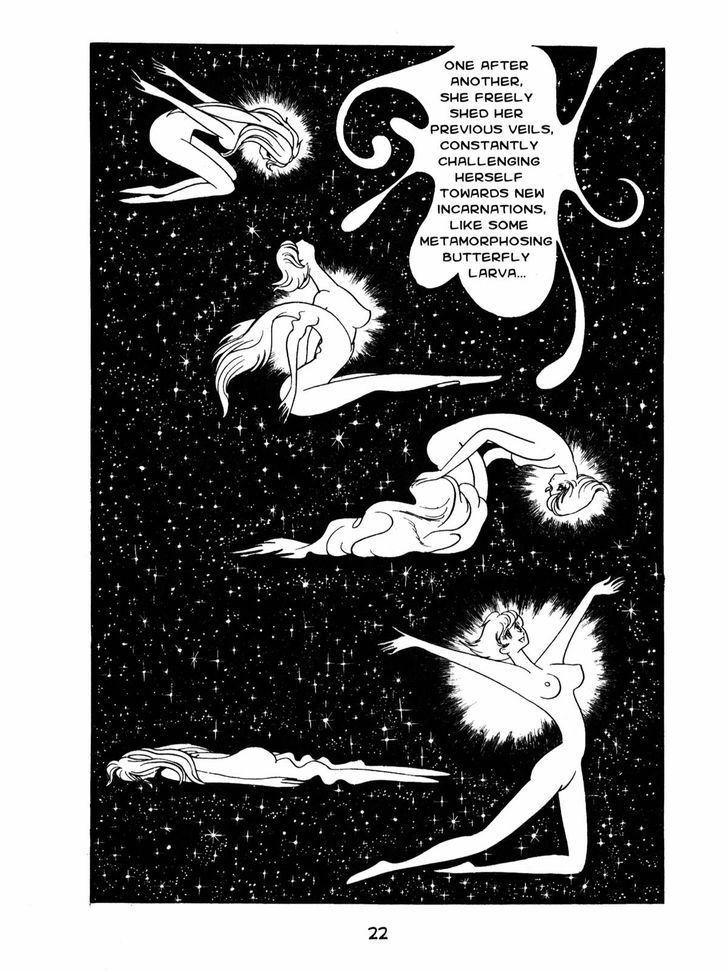
Tokeijikake no Ringo – Osamu Tezuka, 1970
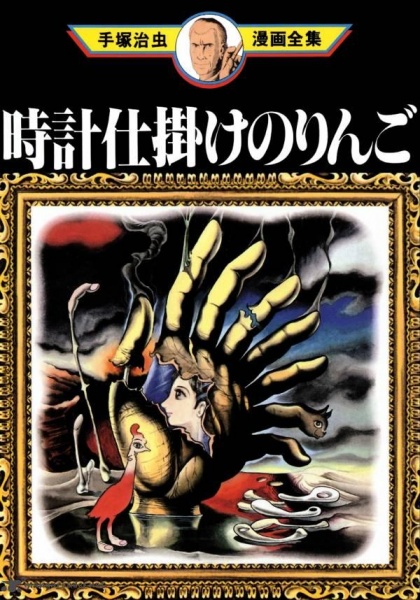
Nope, not kidding. Another Tezuka. This time a collection of top notch short stories.
Let’s move on to what really matters, sorry sensei, but the best manga of 1970 is………..
Kozure Ookami / Lone Wolf and Cub – Kazuo Koike, Goseki Kojima, 1970-1976
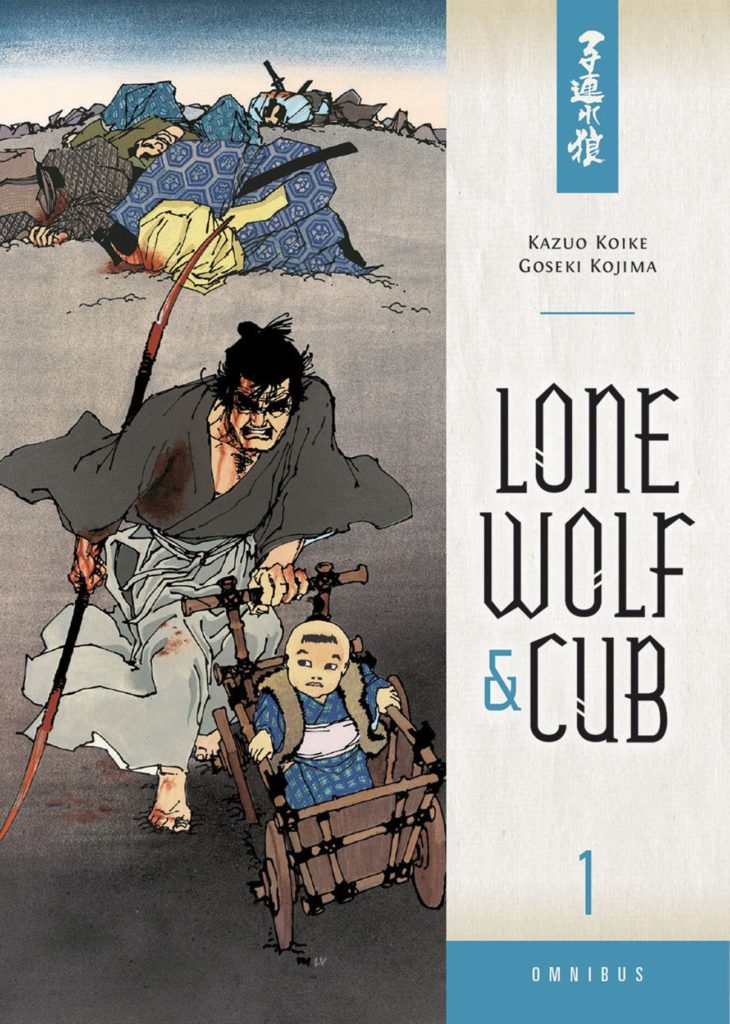
Now we’re getting somewhere.
If ever there was a genre in manga that screamed “patriarchy”, it’s the samurai genre. In a feudal male run world, samurai(s?) are overall badasses who kill each other for honor or sport. Why? Because their strict code says it’s the most glorious thing to do, apart from spilling ones own entrails. It’s a genre full of virile men suffering from tunnelvision, who seem to be able to logic their way through any philosophical maze while convincing themselves they’re going in a straight line and making sense to anyone but themselves. And we gobble it up, because katana duels are just that awesome.
To be honest, I have no complaints about this at all. Kozure Ookami or Lone Wolf and Cub is one of my favourite manga of all time, mental gymnastics be damned. I am the proud but slightly embarassed owner of an entire omnibus set, and I must admit this was the first time a manga ever pulled at my heartstrings like this.
Mental Gymnastics
Back to this fascinating thing I mentioned earlier. Let’s call it “samurai logic”. Dialogues featuring “samurai logic” are oddly similar to a conversation between Jordan Peterson and Joe Rogan, just without either of the involved parties being high on what I assume must be respectively speed and weed.
In Lone Wolf and Cub “Samurai logic” prompts Ittou Ogami to consider himself and his toddler dead, even though they are quite alive and kicking. After being framed for treason, his family name is left in ruins and his entire family massacred, himself and his son being the only survivors. So Ittou declares himself and his son revenge demons from hell, thus bypassing any kind of parental responsibility. The pair roams Japan as assassins for hire, aiming for the destruction of the Yagyuu Clan. Did I mention he has awesome irresponsible sword fights with his toddler on his back? But that’s fine, he was already “dead” to begin with.
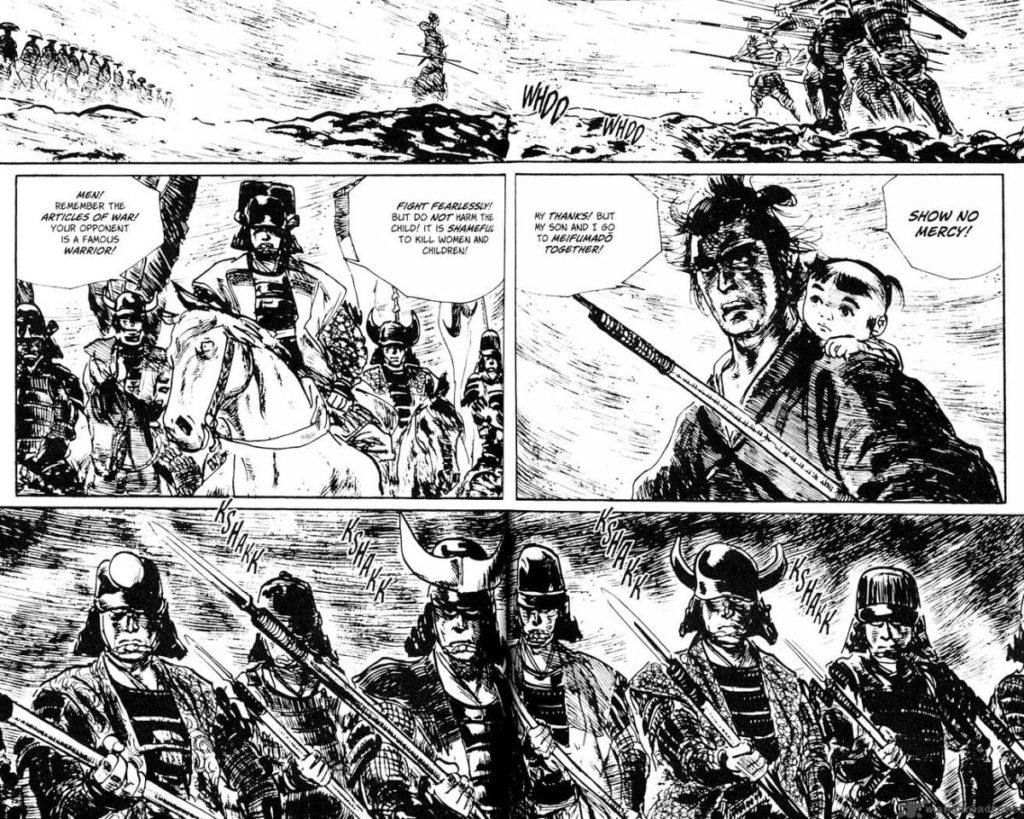
Why it’s good
Anyway, I know I’m making it sound ridiculous on purpose now. But that’s just to show you that even in full realization of the ridiculousness of it all, Kozure Ookami is still one of the most glorious manga of all time. I doubt I could ruin it for anyone. Meticulous research, the amazingly detailed art by Goseki Kojima, the perfect stoic M.C., a cliché of omnipotent male movie heroes, but a GREAT one, a clever pairing of characters… That and a lot of those mental gymnastics described in the previous paragraphs, make Lone Wolf & Cub into a magnificent piece of art. Considering domestic Japanese cinema such as Rashomon, Seven Samurai and Tokyo Story and the works of manga artist Hirata Hiroshi, it’s not as if it the theme or visual style came out of nowhere. But it has never been translated this magnificently into sequential art.
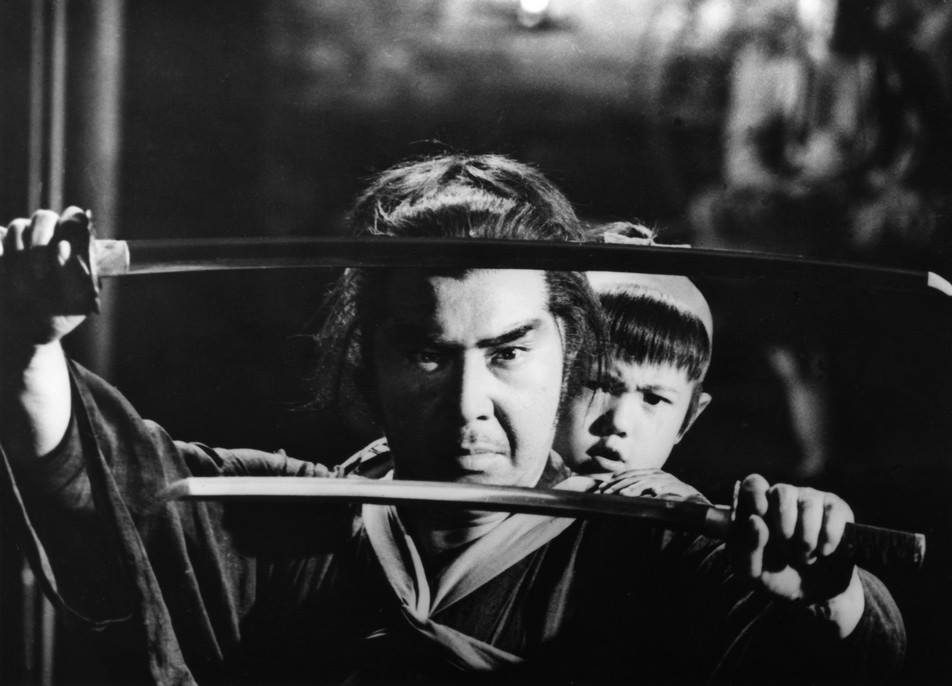
Parental responsibilities vs. revenge
Writer Kazuo Koike stated in an interview that he crafted Kozure Ookami to be based upon the characters themselves. The “essential tension between Itto’s imperative to meet these challenges while keeping his son with him on the journey” drives the story. According to Koike, “Having two characters as foils of each other is what sets things in motion” and that “If you have a strong character, the storyline will develop naturally, on its own.”
It’s true. What makes Kozure Ookami really compelling is not just the craftmanship. It’s this father-son twist that really grabs you by a second pair of testicles you didn’t know you had. Your paternal instincts are knocked into the highest gear everytime Lone Wolf throws his Cub on his back to slice up some people. That’s assuming it’s mostly dudes that read this. I’m not sure I would recommend this to women, considering most of the female characters in Lone Wolf & Cub are prostitutes and rape victims. Which I guess is another kind of patriarchal, but… you know SWORDS GO CHINGCHING WOOSH HACKYSLASH! Okay, my deep apologies for this confusing and problematic paragraph. I’m just gonna add that there’s at least one decent female character in the manga. Enjoy.
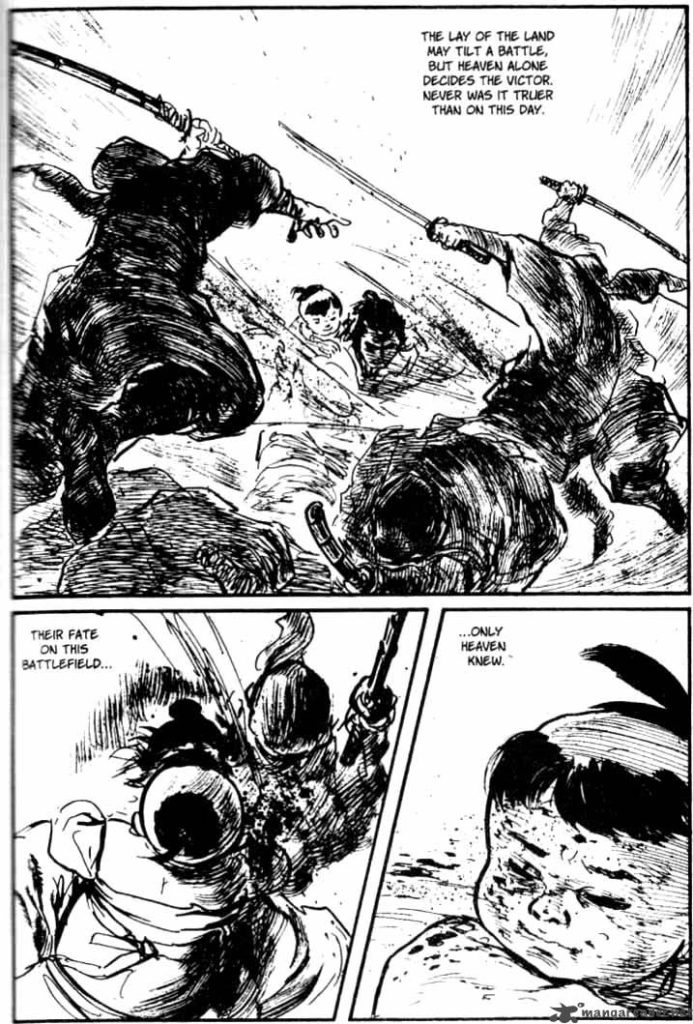
Why it’s good pt. 17 & other understatements
In all seriousness, this is not Hokuto no Ken or something. It’s not just good because it’s badass and samurais are cool. Kozure Ookami is a true masterpiece, that surpasses 99,99% of all other manga on all levels. It was MILES ahead of everything else in its time and (stealing lines from MAL reviews again) arguably the single most influential piece of literature to come from Japan during the 20th century. It’s had an undeniable influence on manga, graphic novels, Japanese and international cinema. Just consider Frank Miller’s Ronin, Rurouni Kenshin or Blade of the Immortal. Kill Bill,… Samurai Jack anyone?
In 2020, Lone Wolf and Cub still stands as the definitive samurai manga. Samuel L. Jackson owns the whole boxset and so should you. But you’re probably poor so go find some illegal scans or something and then cry cuz it’s over and buy it anyway that’s literally what happened to me sorry not sorry.
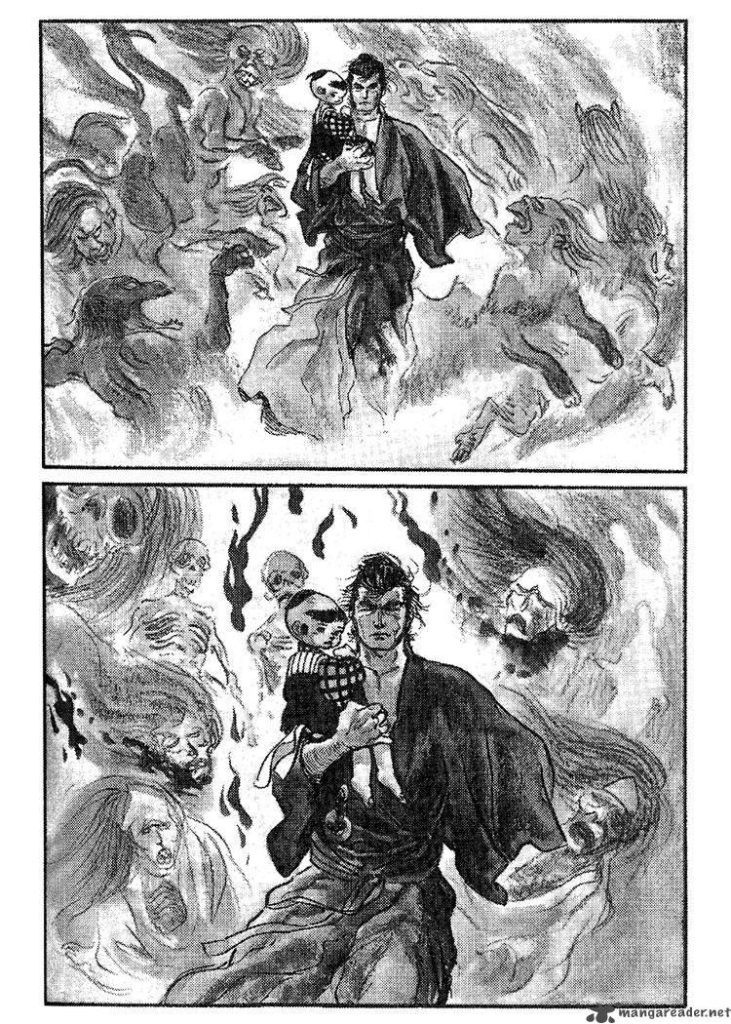
Bonba! – Osamu Tezuka, 1970
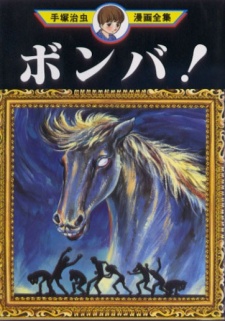
I figured it’s been awhile since I mentioned Osamu Tezuka. Bonba! is a short story about the inherent violence and hatred in a human being, symbolized by the phantom of a horse. Yea, that sounds about right. Some of Tezuka’s best art is in here.
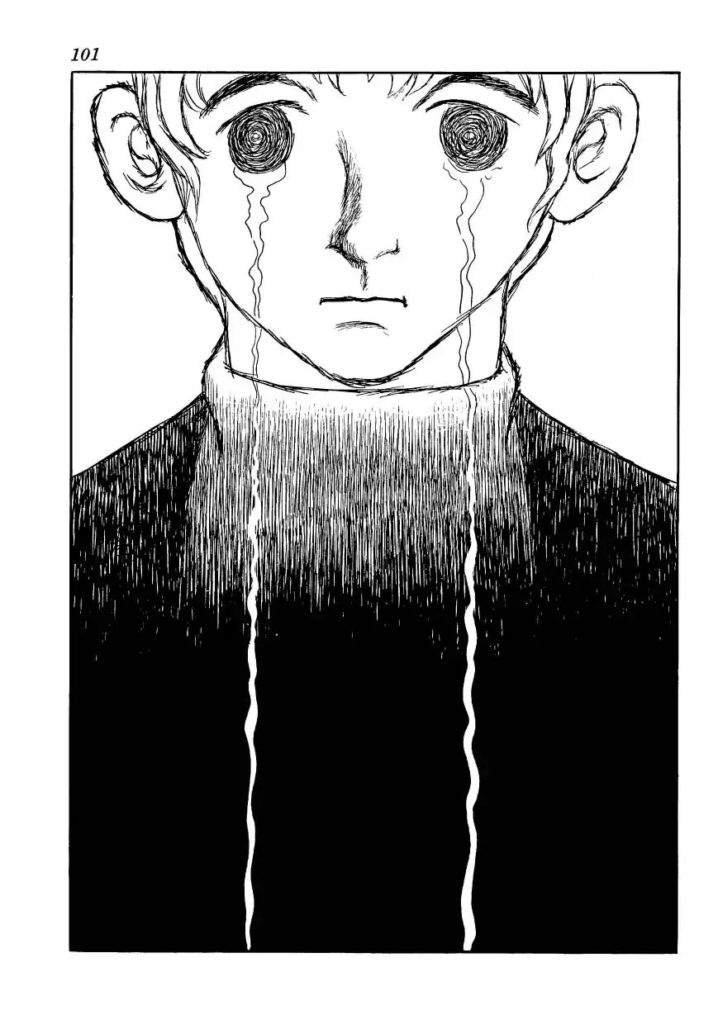
Sunroom ni te – Keiko Takemiya, 1970
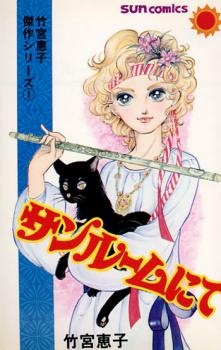
One of her early works, but God I love Keiko Takemiya. Possibly the first shounen ai manga published, and the earliest known male-male kiss in shoujo manga. If you’re into that kind of trivia.
The goodnatured curly headed M.C.’s name is Serge. This seems to be a prototype of the character Serge in Kaze to Ki no Uta. With the promiscuous, mentally unstable and anemic Etoile being Gilbert, I assume? I have no confirmation on this but it seems to be fairly obvious. Any reason to mention Keiko Takemiya or Kaze to Ki no Uta is a good reason. I’ve yet to see better shoujo art than Keiko Takemiya’s.
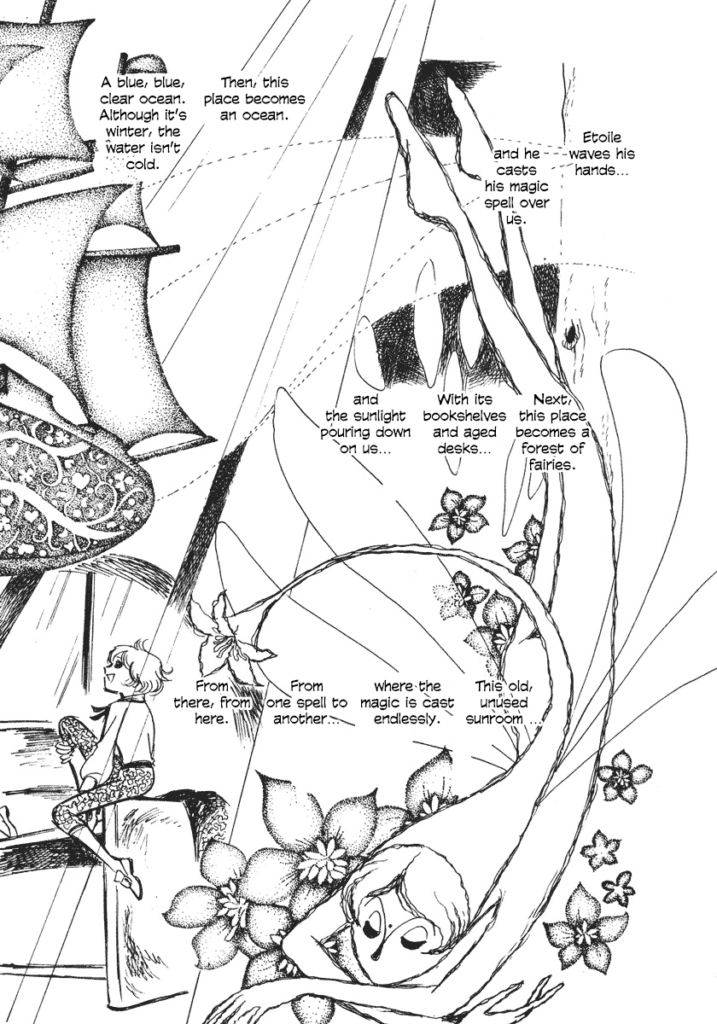
Honorable Mentions
Soregashi Kojiki ni Arazu – Hiroshi Hirata, 1970-1971
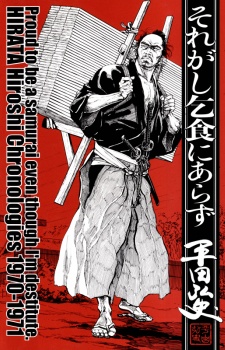
Would be a huge anti-climax to talk about any other samurai manga now.
Skull Man – Shoutarou Ishinomori, 1970
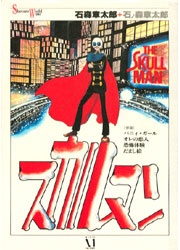
One of manga’s first anti-heroes and proto-type for the tv-show. Dat art.
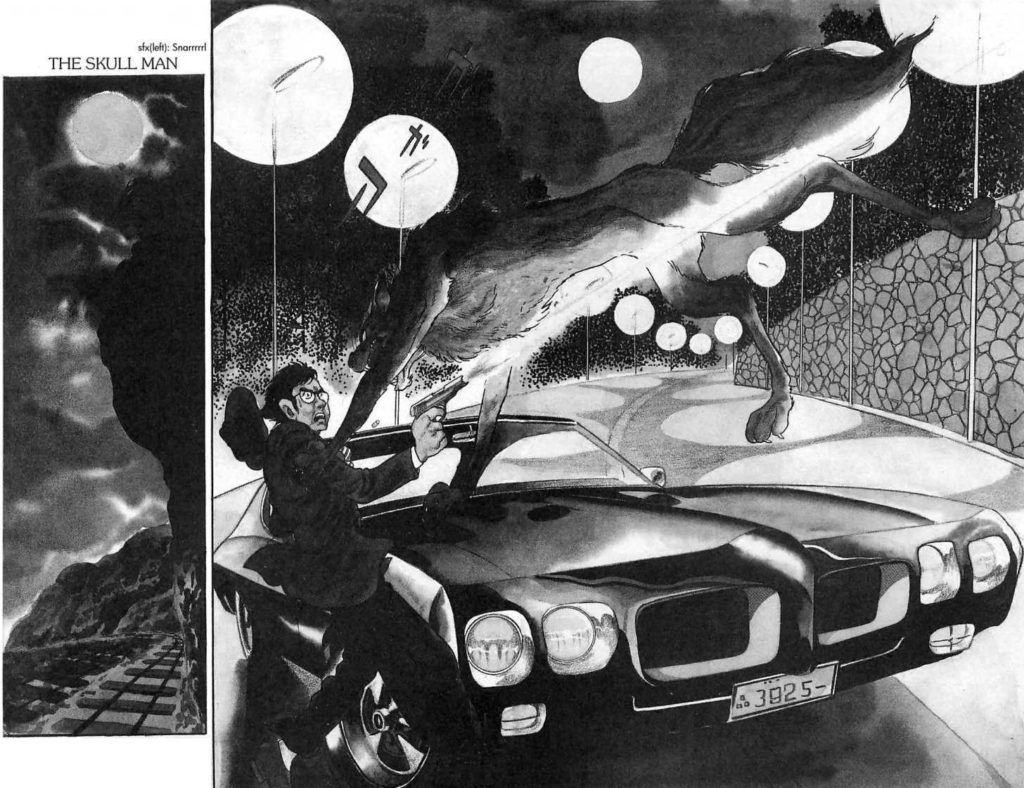
Zeni Geba – George Akiyama, 1970-1971
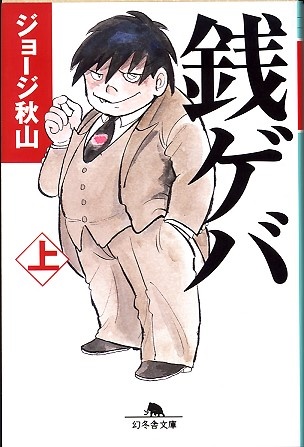
Only found a prequel. I’d say it’s readable but only if you’re into older manga. And if you’re not, why are you here to begin with?
Sasori – Tooru Shinohara, 1970-1975
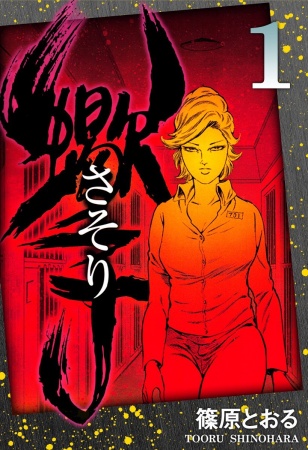
Wani no Bunsho author. Basically femme fatale in prison. Not bad, but I didn’t attempt to read the entire series though, since it’s incomplete.
Yakeppachi no Maria – Osamu Tezuka, 1970
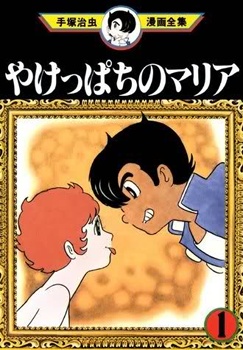
Literally no one is waiting for this, but here’s a bizarre sex education manga by Tezuka. Apparently writing on Ode to Kirihito and Apollo no Uta and Hi no Tori and… wasn’t enough work. He felt he had some time to answer a noble, educational calling. Actually I’m misleading you, it’s more of a supernatural comedy. Not an essential read, but not bad either.
Alabaster – Osamu Tezuka, 1970
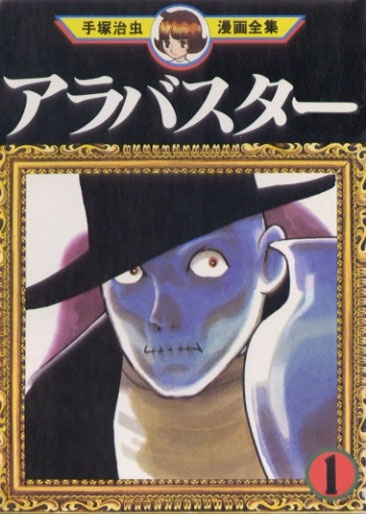
Alabaster is totally fine, but with all these other Tezuka manga, I’d say you have better options.
Spider-Man – Kazumasa Hirai, Ryoichi Ikegami, 1970-1971
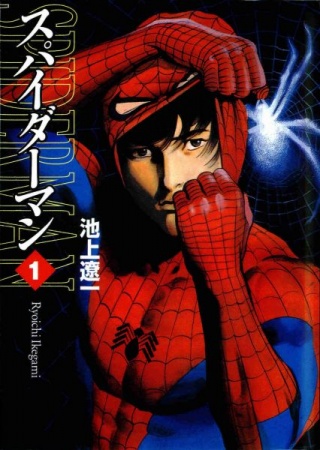
Guys, there’s a spider-man manga. Drawn by the dude from Crying Freeman and Sanctuary, back when he was kinda garbo and still had to read Lone Wolf and Cub so he could steal stuff. I’m kidding, he’s allright.
That concludes my picks for best manga of 1970. Am I delusional? Think I didn’t make enough effort? Share it in the comments or write your own damn blog. Or did I unforgivably overlook your favourite manga? In that case I might actually be interested. Please share your thoughts!
Next post:
Best manga of 1971
Previous post:
Best manga of 1969
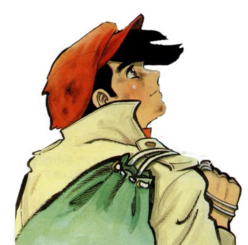
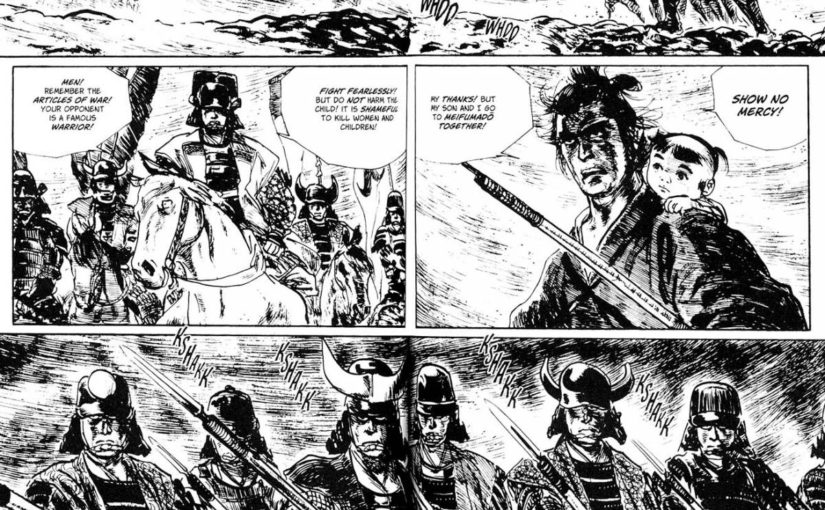
Thank you for these posts. I am very interested in manga history and the “canon” of relevant/influential manga.
Not sure if you will continue with these posts in the future, but if you do, please make a Twitter page for the site.
Hi, I really want to continue, especially with the manga posts, but unfortunately can’t find the time right now. I should have more free time in August, I hope to pick it up then. I’ll definitely consider Twitter if I manage to get a steady posting schedule going again.
This is awesome. It’s been hard to find good recommendations for early manga.
Thanks, glad to help! Sorry for the laste comment approval. Hoping to make more posts this summer.